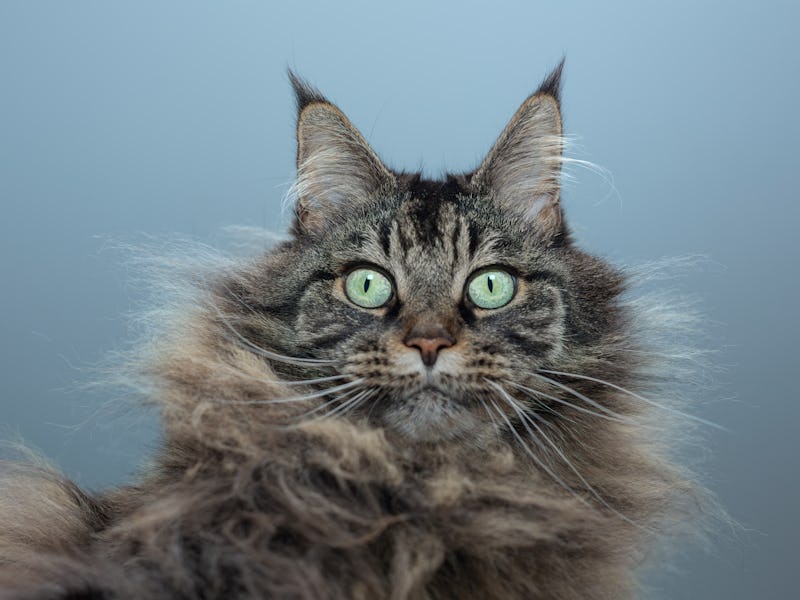Does My Cat Need A Haircut? Here’s What A Vet Says About Feline Grooming
Most cat fur is already equipped for seasonal changes.

Dog owners might be used to taking their pup to the groomer for regular haircuts, but that’s not a typical responsibility for those who have cats. Most felines have no trouble keeping themselves groomed and tidy. But cat fur is fairly thick, so should cat owners consider a feline haircut?
Why Do Cats Have Fur?
Cat fur helps regulate body temperature. Part of that regulation comes from the way it grows in different seasons. “A cat's fur is going to be a lot thicker in the wintertime than it is in the summertime,” Kaitlyn Krebs, a veterinarian and assistant professor of clinical primary care at the University of Pennsylvania School of Veterinary Medicine, tells Inverse.
During the winter, cats grow what Krebs dubs an undercoat of fur that’s “almost like if you were wearing a down jacket…it's able to trap that heat closer to your body to keep you warm.”
The hair actually grows differently at different points of the year. In the summer, fur will grow more lightly. That doesn’t mean the coat will necessarily look any more sparse, but it will be of a different quality. One New Zealand study of 39 cats published in the journal Comparative Biochemistry and Physiology Part A in 1997 tracked short-haired cat fur growth. Indeed, during the winter months cats had more fur both in terms of body weight and skin surface area than in the summer months. In the winter, cats had nearly four times as much fur by both body weight and surface area.
An Australian paper published in 1976 in the journal Research in Veterinary Science also confirmed that cat fur growth was most prolific in the winter months. This small study tracked fur growth in four cats over 20 months. By the autumn equinox, two of them had thoroughly developed an undercoat while shedding individual hairs. By mid-winter, shedding stopped and the authors judged the coats had reached “peak condition.”
Then, toward the end of winter, shedding began again in earnest. By the beginning of the summer, hair growth had slowed. This cycle repeated once the autumn started all over again.
In addition to keeping cats warm, fur also helps protect skin, so if you have an outdoor cat, for example, then fur will protect skin from sun and bug bites.
What About Long-Haired Cats?
Long-haired cats are another story, however. Krebs says that fur in long-haired cats can mat and tangle, which is another reason independent of temperature regulation to groom these cats regularly. However, Krebs also says there’s no need to shave your long-haired cat for temperature regulation.
Rest assured that even though it’s hot out, your cat is well equipped to deal with the weather no matter what season it is.